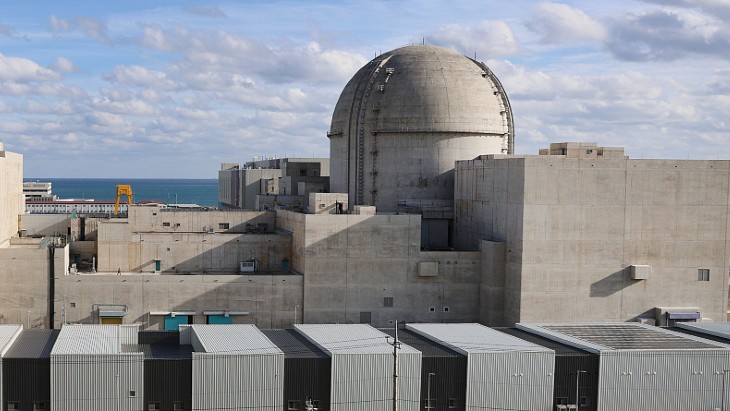A pre-investigation of the area directly below the pressure vessel - known as the pedestal - was carried out in January 2017 at Fukushima Daiichi 2 using a remotely operated camera on a telescopic probe. Photos taken during that investigation showed a black mass and deposits near a grating in the pedestal area, possibly melted nuclear fuel.
The following month, Tepco sent a "scorpion-shaped" robot - developed jointly by Toshiba and the International Research Institute for Nuclear Decommissioning - into the PCV of unit 2. Although the robot was unable to reach the part of the vessel directly under the reactor pressure vessel, the company said the information it gathered would help it determine how to decommission the unit.
In January 2018, an internal investigation of the PCV of unit 2 using a suspended pan-tilt camera attached to a telescopic guiding pipe identified deposits and fuel assembly components at the bottom of the pedestal area.
The utility carried out a survey today of the debris - much of it resembling pebbles - that has accumulated in the bottom of the unit's PCV using a remotely-operated probe. The device - developed by Toshiba Energy Systems & Solutions Corporation - was inserted through a penetration hole that provides access to the vessel. Six locations within the vessel were surveyed.
.jpg)
Workers insert the probe into the PCV of Fukushima Daiichi 2 (Image: Tepco)
The probe - approximately 30cm in length and 10cm in width - features a camera, LED lighting, a pan-tilt mechanism, finger drive mechanism (tongs), radiation dosimeter and a thermometer.
Tepco said that during the survey it was able "to touch sediments at the bottom of pedestal in the PCV for the first time". It added, "With the closer approach to the sediment than in the previous survey, images, dose and temperature data were acquired. In the future, along with confirmation of the acquired images, an evaluation [will be made] of dose and temperature data.
Tepco said that the probe was able to pick up debris in five of the six areas surveyed. The probe could not manipulate the material in the other area as it was in a large, clay-like mass. No samples were removed from the containment vessel during the survey.
Tepco has also carried out robotic surveys of the PCVs of units 1 and 3 at the Fukushima Daiichi plant.
The data gathered during today's survey, together with those at the other units, will help Tepco decide on how to remove the melted fuel from within the reactors during their decommissioning.
Japan expects to start the retrieval of fuel debris from the Fukushima Daiichi units in 2021, the executive director of the Nuclear Damage Compensation and Decommissioning Facilitation Corporation said in June 2015.

.jpg)



_72306.jpg)


_49562.jpg)





